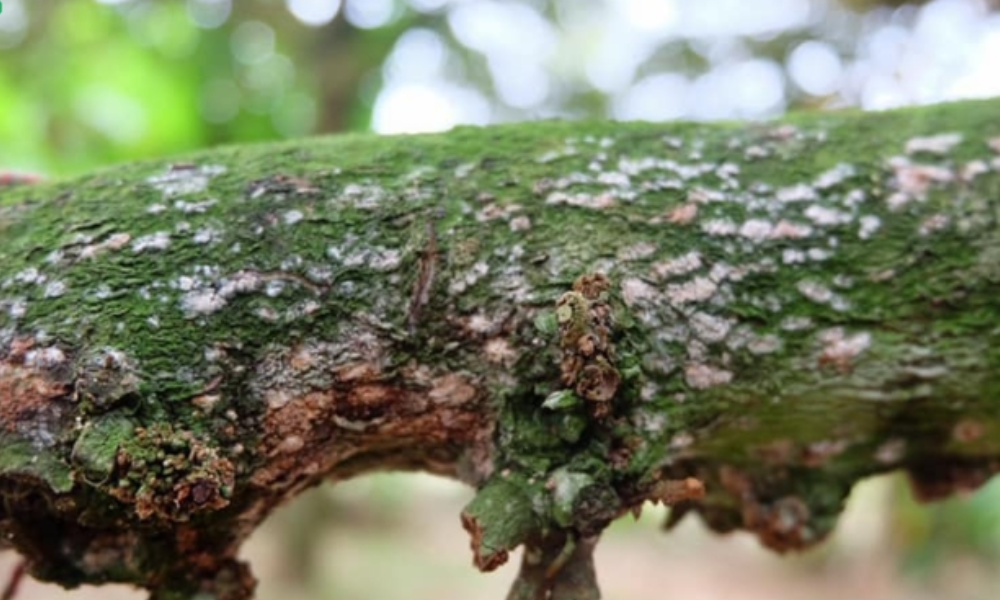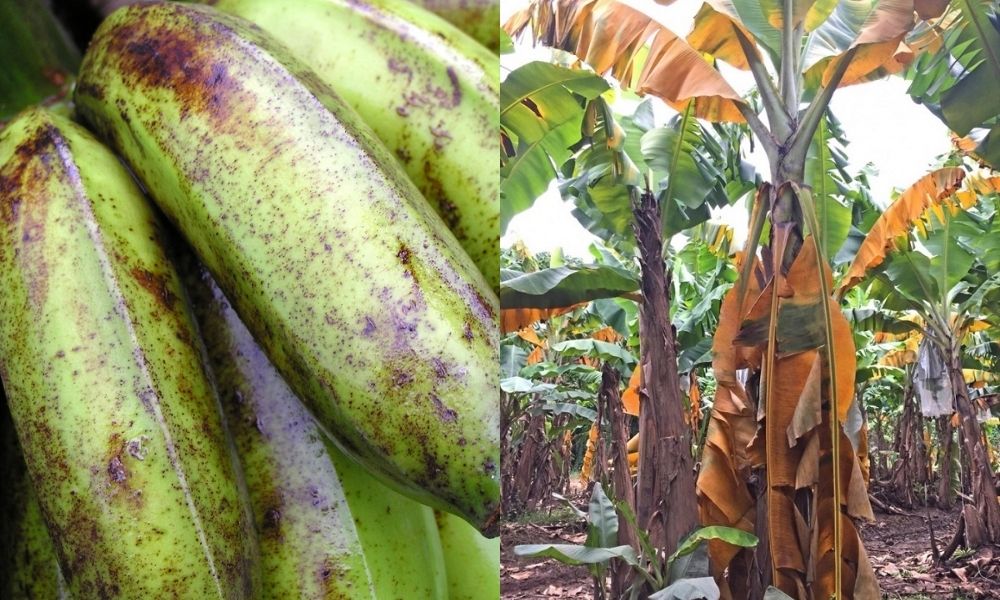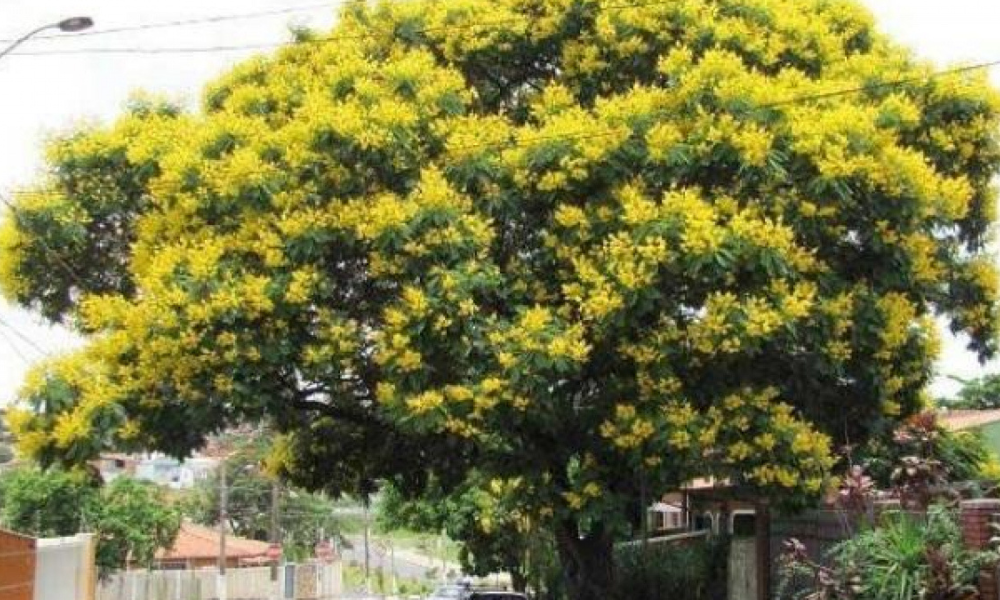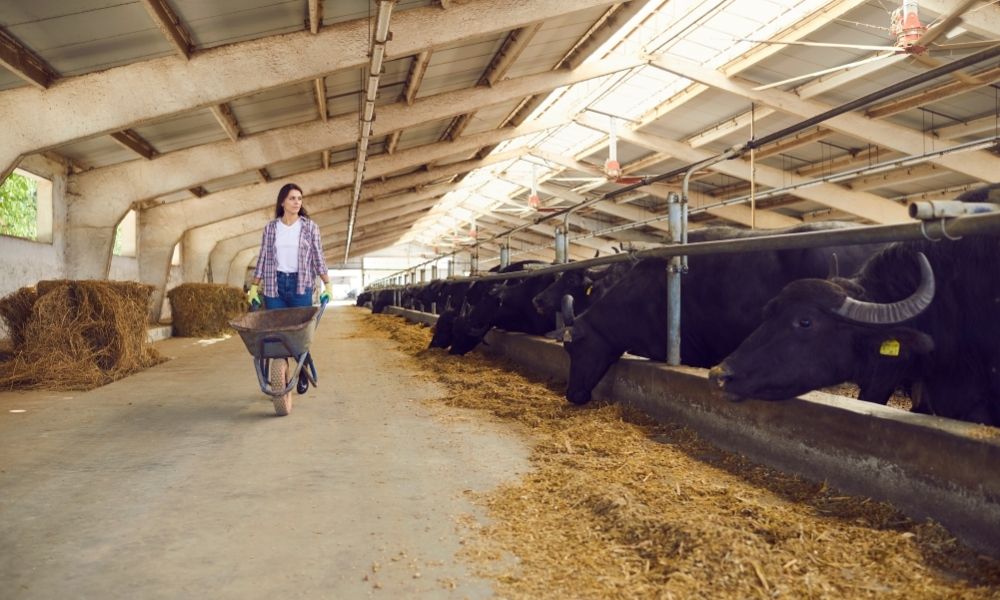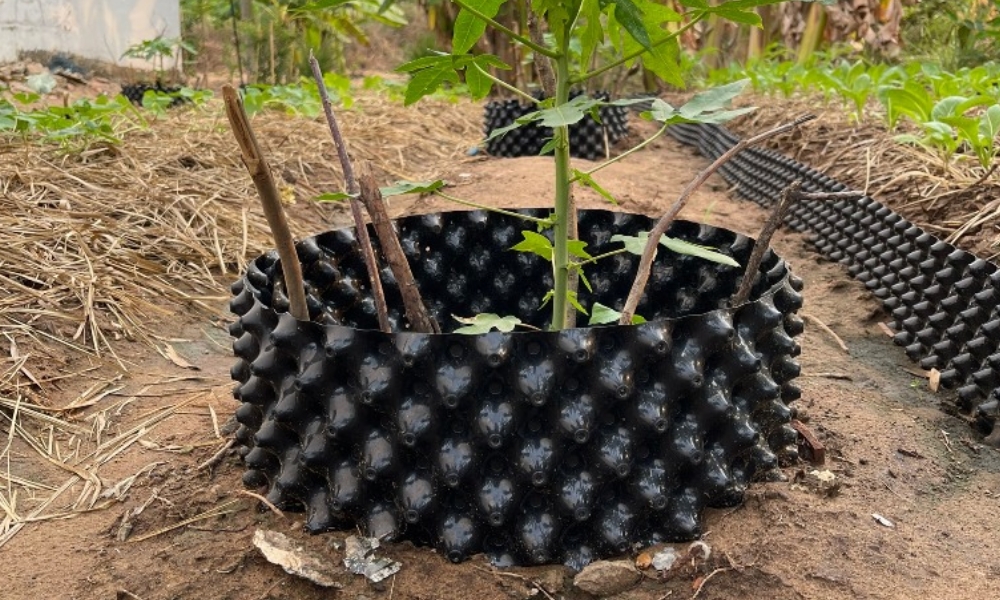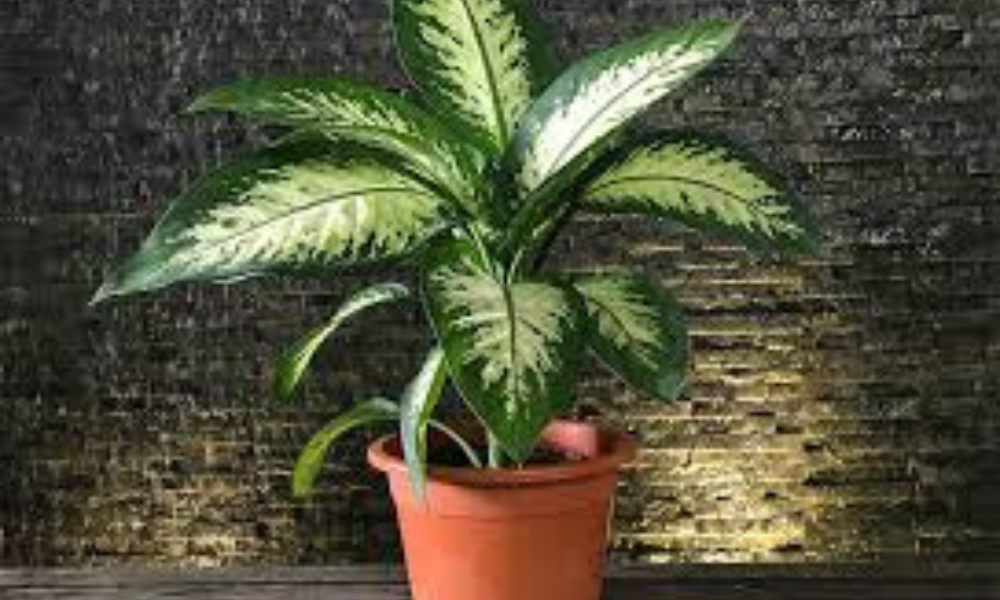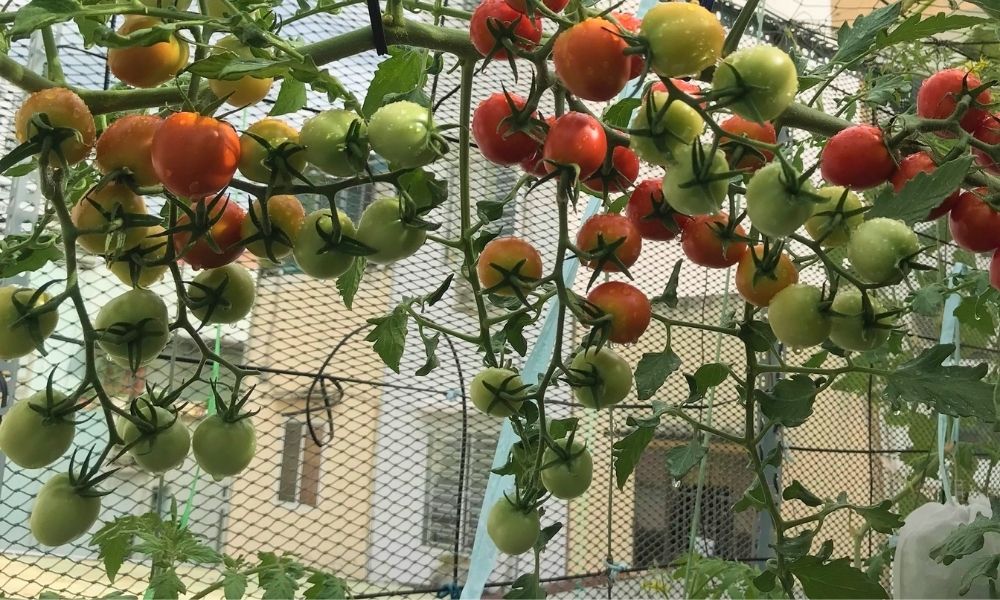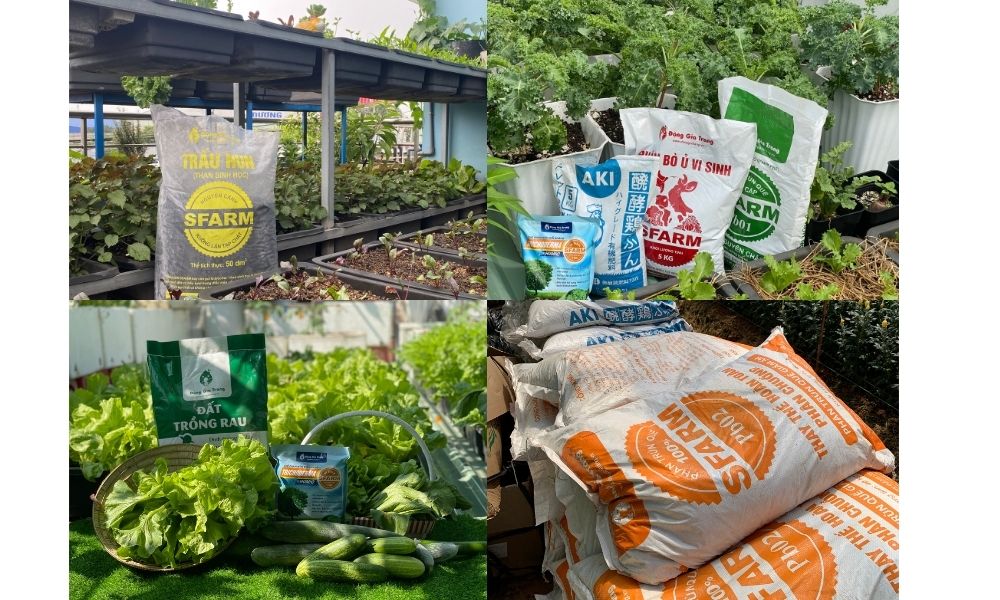Hướng dẫn cách trồng hoa hồng cho người mới bắt đầu
Instruct How to grow roses Details for beginners at Blog Kiến Thức Tổng Hợp Nông Nghệp. Let’s explore the characteristics, how to grow and how to use vermicompost to care for roses effectively. Find out now in the article below!
Rose characteristics
Roses have widely developed root clusters, helping the plant absorb nutrients well. The trunk of a tree is woody, has curved branches and spines, divided into nodes (where leaves and buds grow), internodes (space between nodes). The leaves are pinnately compound, have small serrations, dark or light green depending on the variety.
Thorns grow on internodes, usually red. Roses come in a variety of colors, can grow singly or in clusters, and are bisexual flowers with male stamens and female pistils on the same flower. The fruit is oval shaped, the seeds are small and difficult to germinate due to the thick shell.
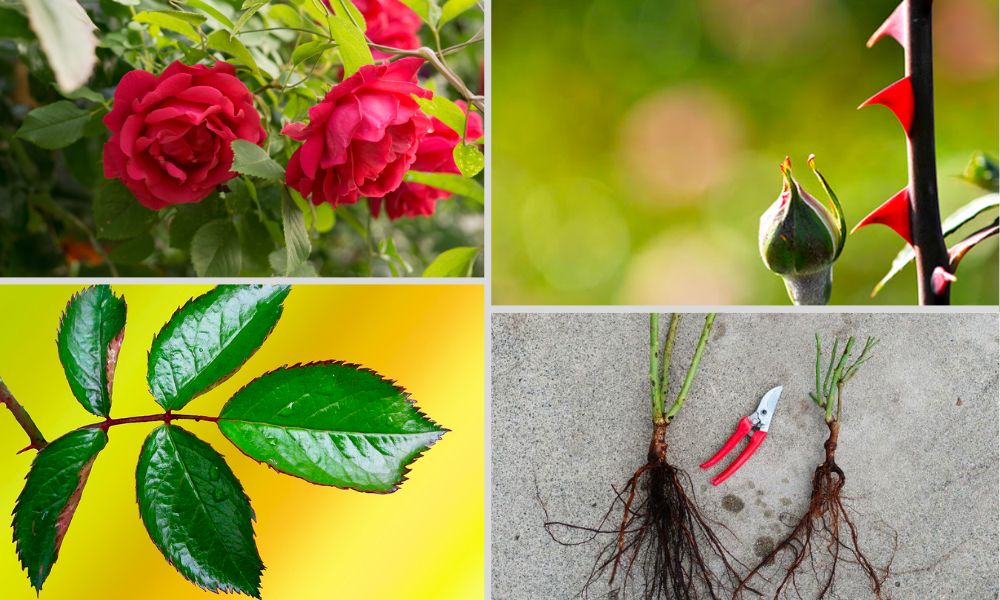 Characteristics of roses
Characteristics of roses
Conditions for growing flowers
Temperature: Suitable for the growth of roses ranges from 8 – 25°C, although the plant is resistant to heat from 8 – 38°C.
Humidity: Roses need to be planted in soil with a humidity of 60 – 70% and air humidity should be maintained at 80 – 85%.
Light: Roses are plants that love sunlight. When planted, they need adequate light to grow healthily. If there is not enough light, the plant will grow poorly.
Planting land: Roses are not too picky about soil, but it is best to grow them on loose, well-drained soil, with a pH of 5.6 – 6.5 and balanced NPK nutrient content.
How to grow simple, standard roses at home
Planting season
Roses are usually planted in spring from February to April and autumn from August to October.
Choose breed
There are more than 300 different types of roses in the world. In our country alone, there are more than 50 types of roses with different colors, designs, etc., divided into groups: red varieties, pink varieties, yellow varieties, lotus rose varieties, white varieties and mixed varieties. .
If you’re new to growing roses, spend some time researching the specifics of your growing area, then find roses that have the right characteristics. Surely some of the rose varieties here will be the ideal choice for you. Or French climbing rose varieties with beautiful beauty and large, beautiful blooming flowers are also an option that will not disappoint you.
You can buy cuttings, grafts, grafts, etc. available at reputable tree nurseries to have a higher rate of living and healthy trees. When you first buy rose plants, they have had to travel a long distance and change their living environment. Therefore, when they reach you, the plant will be weaker than usual. Therefore, you need to remove the bulbs and pot these roses properly to ensure that they will grow well.
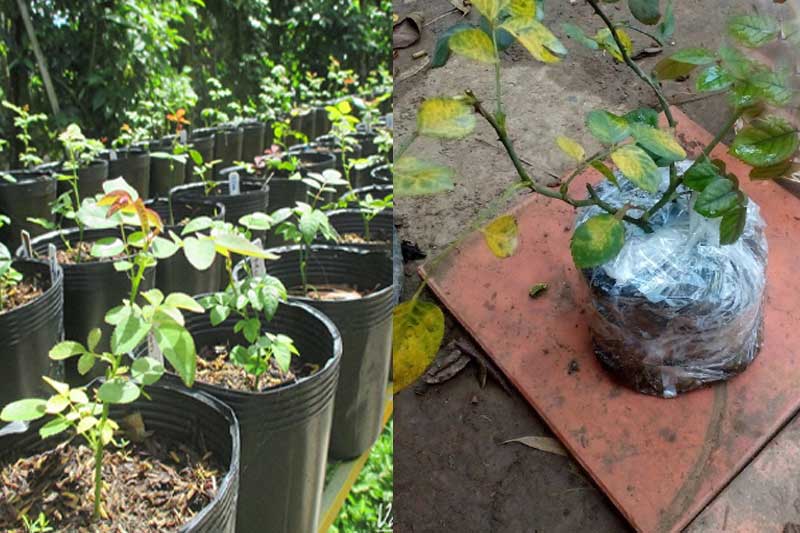 Choose rose seedlings
Choose rose seedlings
Flower pots
Before planting roses, you need to clean the pot to remove dirt and pathogens, ensuring a clean growing environment for the plant. When choosing pot size, you should pay attention to the number of flowers:
- Pot diameter 15 – 20cm: Plant rose plants with 4 – 7 flowers.
- Pot diameter 20 – 30cm: Plant rose plants with 8 – 12 flowers.
- Pot diameter 30 – 40cm: Plant rose plants with 13 – 21 flowers.
- Pot diameter > 40cm: Plant rose plants with 22 – 50 flowers (usually large flower beds).
Regarding the height of the pot, you should choose a pot with a height of > 25cm so that the plant has enough space for the roots to grow deeply.
Planting location
Roses love sunlight, need a cool place, and need light for at least 8 hours/day for the plant to grow well. The place where flowers are grown needs to have loose, well-drained, nutrient-rich soil to avoid leaving the plants submerged or wet for too long.
If you live in a hot climate, you should choose a place with shade in the afternoon to avoid too much sunlight and not harm the plant. Besides, you should also avoid planting roses with large trees, which will cause the trees to compete for nutrients, making it difficult for them to grow.
Planting land
To properly plant roses in pots, you first need to choose loose soil, a substrate that is airy, moisturizing and has good drainage. After choosing the pot and soil, the next step is to mix the growing medium together in the following ratio:
Formula 1: 50% clean land; 20% smoked rice husk; 30% vermicompost
Formula 2: 40% coco peat; 10% smoked rice husk; 20% terracotta pellets.
Rose growing mixture containing earthworm fertilizer is considered to be of good quality, increasing the efficiency of fertilizer use, giving flowers beautiful, durable colors, hardening plants, thickening leaves, and helping healthy roots thanks to the content of Antifungal strains of microorganisms help plants increase their resistance to pests and diseases that attack rose plants.
In addition, earthworm compost contains nitrogen-fixing microorganisms, insoluble phosphorus-degrading bacteria, and cellulose-degrading microorganisms that will help quickly decompose the growing medium into simple organic substances for the persimmon plants to absorb nutrients. Easy and effective maintenance.
Plant roses
To keep the flower pot well-ventilated, place a few Blog Kiến Thức Tổng Hợp Nông Nghệp terracotta tablets on the bottom. Next, plant the roses in the pot and fill the base of the plant with the mixed substrate. If the persimmon tree is in a plastic pot, place the tree on its side in the pot and use a sharp knife to cut the plastic bag from top to bottom to separate the bag from the pot.
Then, gently place the rose plant upright in the middle of the pot, then fill it around with the mixed mixture. You should use your hands to press down on the soil to keep the roots from shaking. Don’t press too hard because it can break the young roots of the persimmon.
Note: Before separating the bulbs, stop watering for a day, because the soil is too soft and the bulbs will easily break.
After planting, we should lightly water the entire tree trunk and base again to help the tree grow better.
The next thing is to use a few small bamboo sticks the size of your little finger, about 40 – 50cm long, one end inserted deep into the ground, and the other end facing the stem or rose branches, tie tightly where the rose branch meets the stick. Bamboo helps the tree stand upright and firmly when its root system is not enough to contact the new living environment.
Finally, you need to shade the rose pot from the sun or bring it to a shady place to help the plant avoid wilting.
Once the plant is alive, place the pot in a well-lit, well-ventilated place. If rose leaves are exposed to 8 hours of sunlight, the plant will grow well, grow quickly, and be less susceptible to pests and diseases. When well cared for, roses also produce more flowers with brighter and fresher colors.
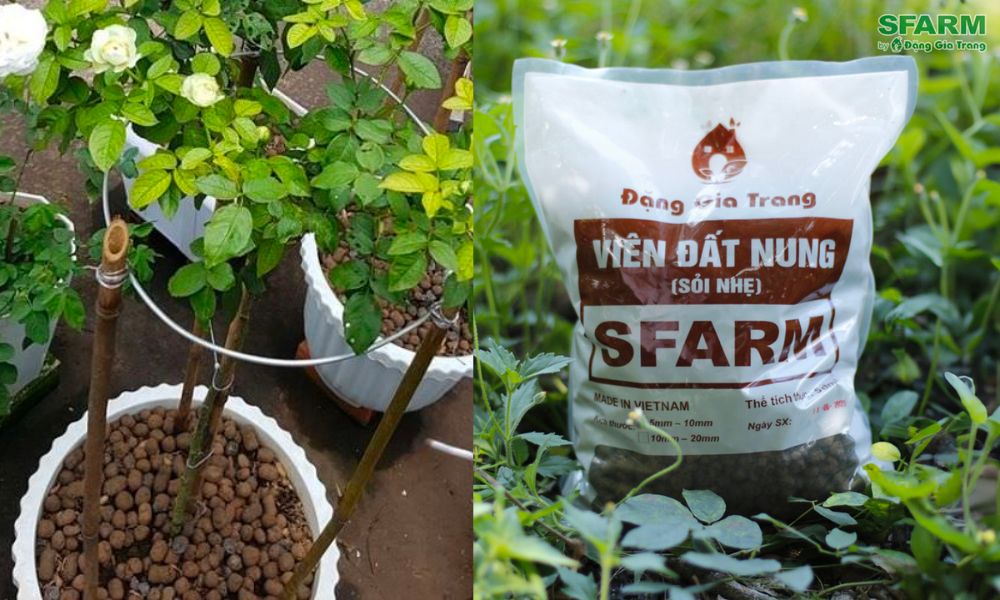 How to care for roses to grow lush and healthy
How to care for roses to grow lush and healthy
Watering
After planting roses, it is necessary to water adequately to provide moisture for the plant to grow. Especially in hot and dry environments, it may be necessary to increase the frequency of watering. However, only water enough to moisten the soil, avoid making the soil too wet.
Avoid watering from 10 a.m. to 6 p.m., because this is when high temperatures cause water to evaporate quickly. Avoid watering the leaves and stems to limit the risk of fungal and bacterial attacks. In addition, when watering, you can add a layer of soil at the base to limit soil splashing.
Fertilize
When fertilizing roses, prioritize organic fertilizers, which help provide necessary nutrients for plants and balance the pH of the soil. Besides, you should use fertilizers such as vermicompost, phosphate fertilizer, potassium fertilizer or nitrogen fertilizer.
After 1 week of planting, you need to fertilize the tree with earthworm fertilizer, depending on the size of the tree. Each time you fertilize, you can add banana and egg fertilizer.
Every 7-10 days, continue to fertilize with earthworm fertilizer to help flowers bloom with beautiful colors and thick petals. After 3 months, loosen the soil around the base and add earthworms to the soil surface to prevent pests.
Pinch the tops and prune the branches
The purpose of pinching the top of the tree is to prevent the tree from growing too high and to concentrate nutrients on the branches and leaves. The appropriate time to pinch the top is when the plant is about to flower. This stimulates side buds and branches to grow faster, creating more new branches, increasing the flowering capacity of the plant.
When pruning, you should leave 3 – 5 leaves on the tree. Avoid pruning too many leaves as the tree will lack vitality and cannot continue to grow.
The right time to prune trees is in early spring. Before cutting, add vermicompost to supplement nutrients for the tree. Remove old and bad branches to help the tree bloom more. After pruning branches, you should spray pesticides to prevent pests from the tree.
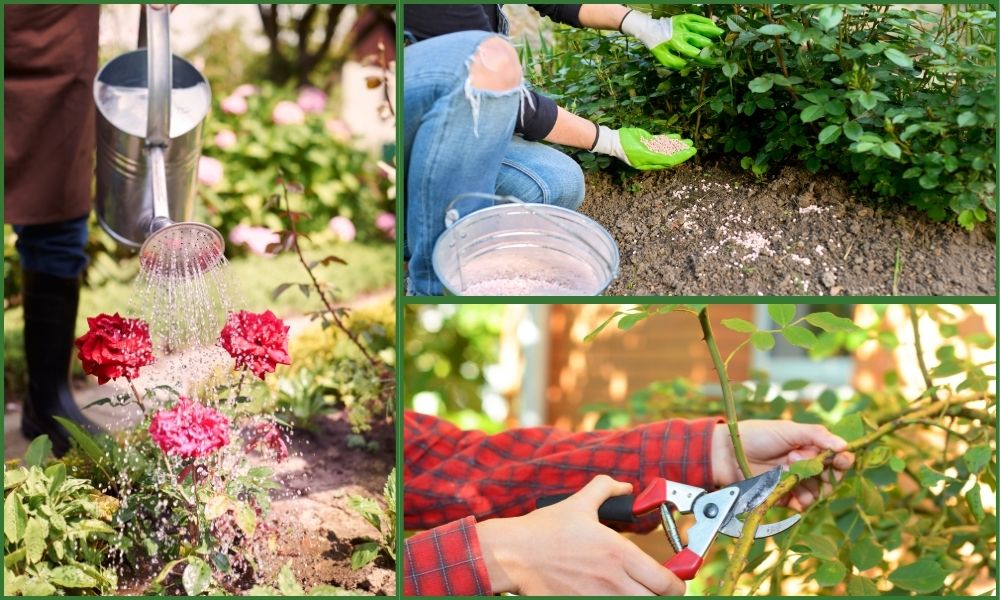 How to care for rose plants
How to care for rose plants
Prevent pests and diseases
Roses are susceptible to pests due to reasons such as: pots planted in damp places, lack of light or waterlogging when it rains. Pest attacks will reduce the vitality of roses, damage flowers and leaves, weaken the plant and possibly kill it.
Black spot disease
Pink leaves appear black spots, yellow leaves and gradually fall off. You should plant roses in a dry place, keep the leaves dry, prune diseased leaves and have a reasonable care regimen. You can use 1 teaspoon of baking soda mixed in 1 liter of water, add a few drops of soap to disinfect the plant.
Powdery mildew
Layers of white powder cover the rose stems and leaves. The disease appears due to wet growing areas and lack of direct sunlight. You can spread lime to prevent disease. If the tree is sick, you can spray baking soda for a few days to get rid of the disease.
Rust disease
Small yellow spots appear on rose leaves and gradually spread over the entire leaf. The disease often appears when the weather is wet, so when rust occurs, we must stop watering and use lime water and baking soda to disinfect.
Verticillium wilt disease
The disease causes serious damage in the summer, when the weather is dry. When you see that the tops are wilted but still green and the leaves below are yellow, they can recover at night but after a few days they turn yellow and finally brown. Trees wither, die and often start to die from the top down. To prevent, it is necessary to disinfect the soil with chemicals such as 3% formalin. However, the disease is very difficult to prevent in flowers grown in the field on large areas.
Bug
White, brown or green, usually concentrated on the tops of buds and flower buds. When aphids concentrate too much, the plant will become wrinkled, brittle, and damage flower buds. Prevent bedbugs by spraying water and organic products; if more complicated, you can use suitable non-toxic plant protection drugs.
In addition, red spiders, white spiders, thrips, leaf-eating worms or snails are also causes of damage to roses. We need to observe and care for roses regularly to minimize pests and diseases
Harvest roses
The time to harvest is early morning or late afternoon because at this time the plants still have a lot of sap and water, so the flowers take a long time to wilt and wilt. Before cutting, you should water more than usual so that the plant can reserve some water for the flowers (because after cutting, the roses will evaporate and lose water).
Cut with a sharp knife, immediately put in clean water and put in a cool, shady place for storage. The cutting position should leave 2 – 4 nodes or cut close to the main flower branch. When cutting, be careful to leave about 3 leaves below the branch so that later on the remaining part of the rose branch will grow 3 new buds so that at least the new rose branch will produce 1 – 3 flowers in the next generation.
When cutting flowers, you should combine it with pruning and removing unnecessary branches, cutting off damaged leaves and spent flowers. After cutting and pruning the flowers, continue to care and fertilize.
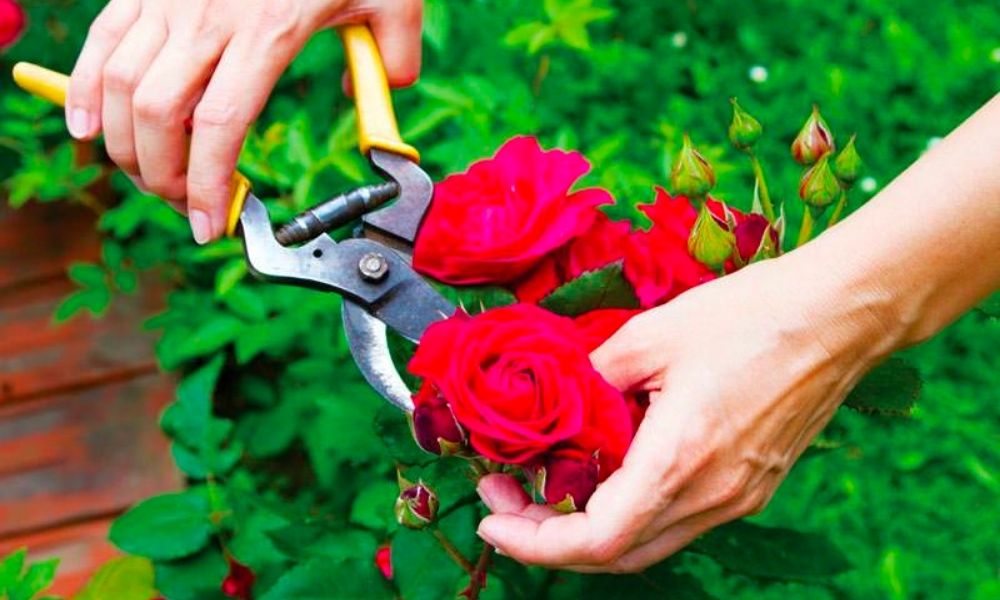 The process of pruning roses grown in the garden
The process of pruning roses grown in the garden
Above, Blog Kiến Thức Tổng Hợp Nông Nghệp Blog has detailed instructions on how to grow roses for beginners. At the same time, let’s learn about the characteristics, care, and prevention of pests for rose plants. Hopefully, through this article, you can clearly understand how to grow roses correctly and successfully apply the Blog Kiến Thức Tổng Hợp Nông Nghệp rose planting method as instructed in your garden!
See more:
Blog Kiến Thức Tổng Hợp Nông Nghệp – Dang Gia Trang The honor is trusted supplier organic and biological agricultural input products from more than 1,500 agents and stores nationwide. Customers are invited to contact us with the following information so that the Blog Kiến Thức Tổng Hợp Nông Nghệp team can quickly support:
– Website: https://sfarm.vn/
– Hotline: 0934 19 xxxx
– Zalo: Blog Kiến Thức Tổng Hợp Nông Nghệp customer service – 0934 19 xxxx
4.9/5 – (76 votes)
Chuyên mục: Kiến thức làm vườn
Nguồn: lol.edu.vn

 0934.19.6789
0934.19.6789
